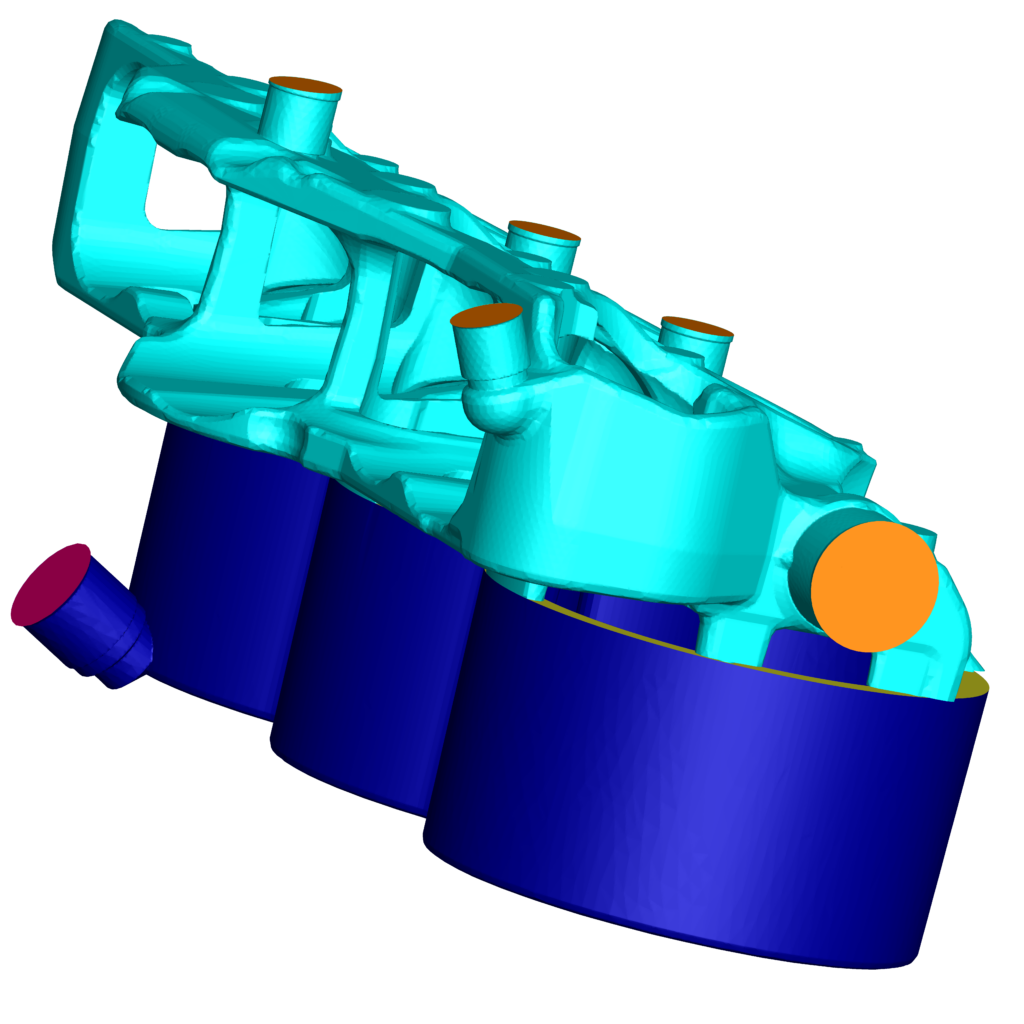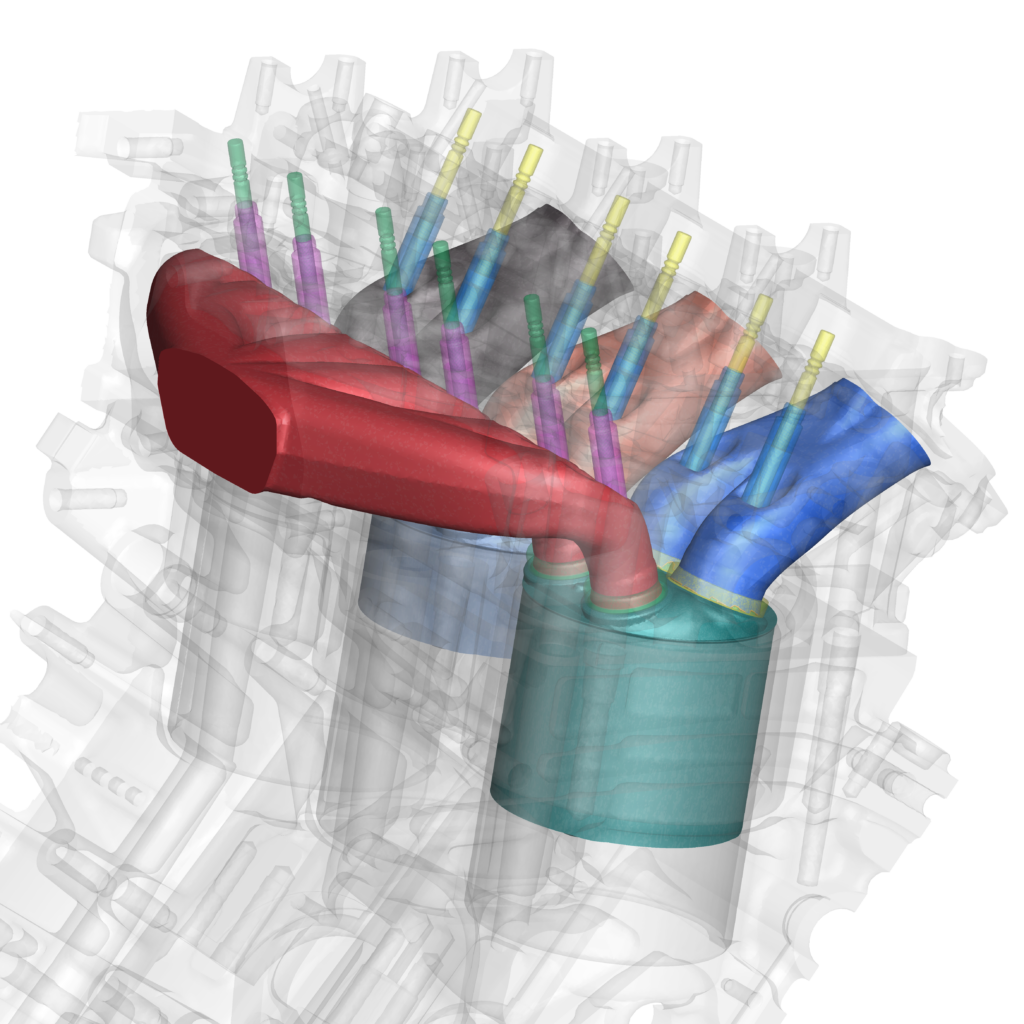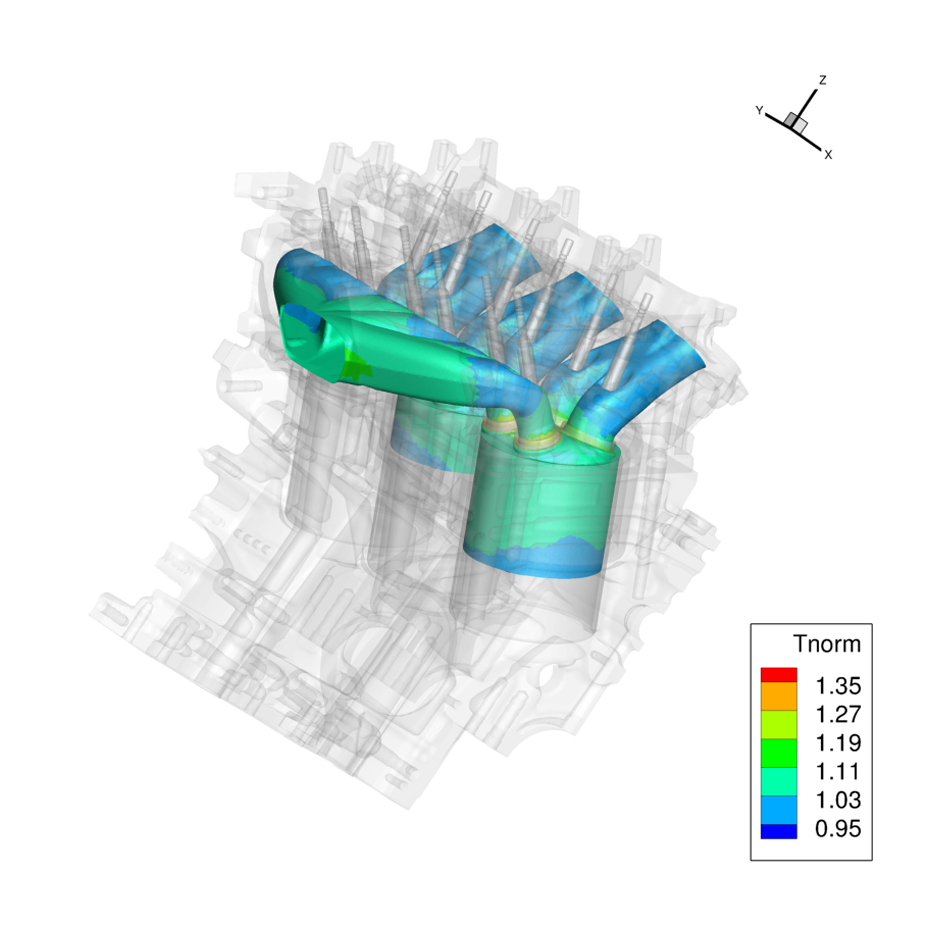
Author:
Sankalp Lal
Application Engineer, Documentation and Technical Marketing
The extreme conditions in internal combustion (IC) engines make it important to understand the thermal and structural stresses experienced by critical components of the device. In the cylinder, studying the temperature distribution and the thermal stresses caused by combustion is essential to determine the durability of the engine. For such conjugate heat transfer (CHT) problems, where the heat transfer occurs simultaneously within and between the fluid and solid regions, CONVERGE offers a novel time control approach to accelerate the simulations without decreasing accuracy: super-cycling.
In super-cycling, CONVERGE alternates between two solution methods. First, CONVERGE runs a fully-coupled fluid-solid transient solver to convergence. Then, CONVERGE uses the solution of that solver to update the boundary conditions for a steady-state solid-only simulation. The solid-only results feed back new boundary condition information to the transient solver. This alternating process repeats until the global simulation is complete. Super-cycling also makes it possible to map heat transfer results from one cylinder to all the other cylinders in the geometry, obviating the need to model combustion in all cylinders and further accelerating the simulation.
Here, we’ll briefly look at a study demonstrating how CONVERGE can accurately predict the temperature distribution in the engine head and block. For more details, please see our white paper on the topic.
In this study, the geometry is half of a V6 engine, including the engine head and block. We solve the case by two different approaches which are described below.
Because of the different time-scales of combustion and heat transfer in the engine’s solid components compared to heat transfer in the coolant, CONVERGE’s methodology involves running two separate simulations and mapping results between the two in an iterative process to obtain converged temperature predictions. This procedure allows for optimal settings for both the coolant and the chamber simulations to enhance the overall simulation accuracy and speed.
In this option, the first simulation is of the coolant flow and the heat transfer between the coolant and the solid materials of the engine head. The second simulation is a CHT simulation that models the combustion process and heat transfer between the combustion chamber and the engine block and head. Figure 1(a) shows the engine coolant system, and Figure 1(b) shows the geometry for the combustion simulation.


The second approach also iterates between two simulations. To efficiently determine the requisite solid temperature field, we first perform simulations to model combustion in the engine cylinder. These simulations may take longer to run. We then perform a CHT simulation to model heat transfer between the coolant and the solid material.


The results from both of the iterative approaches were in good agreement with experimental data. The normalized surface temperature distribution results are shown in Figure 2. These approaches combine the accurate and detailed simulation of combustion kinetics with CHT to develop a realistic temperature distribution in the solid components of an engine. With CONVERGE, engineers can efficiently include the details of gas flow, combustion, and coolant flow to predict the temperature field for optimal design of solid engine components without the additional complexity of building a mesh. To learn more, please check out our CHT white paper!


